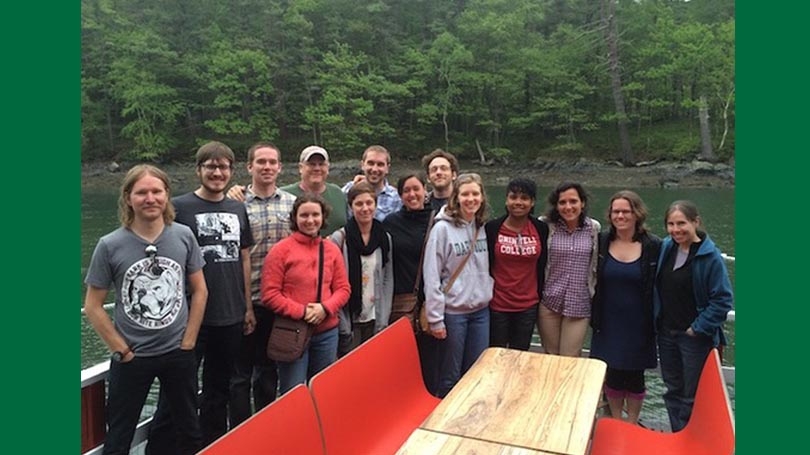Dr. Shannon Hinsa-Leasure is a microbiologist and an associate professor of biology at Grinnell College. Her lab is studying whether the use of copper alloys in hospitals can reduce the number of bacteria on surfaces, a major source of hospital-acquired infections and the spread of antibiotic resistance genes from hog confinements into the environment. While earning her Ph.D. in molecular and cellular biology at Dartmouth, Hinsa was a graduate student in the laboratory of professor George O’Toole. When Hinsa was finishing her B.S. degree in bacteriology at University of Wisconsin-Madison and deciding where to apply for graduate school, she asked one of her favorite professors, Jorge Escalante, for advice. She remembers, “He told me that George O’Toole was someone I needed to consider working with.” O’Toole was Escalante’s former graduate student, and at the time O’Toole had just accepted a position as assistant professor at Dartmouth. This advice prompted Hinsa to apply to Dartmouth and she eventually joined O’Toole’s lab as his first graduate student. “The rest is history,” she said.
One of Hinsa’s former undergraduate student researchers, Shanice Webster, remembers having a very similar discussion. Hinsa served as both her research mentor and academic advisor. Webster spent a semester doing research in Hinsa’s lab and reflects that this experience helped her decide that graduate school was the right choice for her. During her final year at Grinnell, Webster met with Hinsa and showed her the list of graduate schools she was considering. “She was pretty surprised when she realized Dartmouth was not on my list. Shannon strongly encouraged me to apply,” Webster recalls. Hinsa suggested that Webster “look at Dartmouth because of the fantastic faculty.” Hinsa shared her experiences as a graduate student at Dartmouth with Webster. She really enjoyed the close-knit nature of the research community and “the fact that the umbrella program made collaborations with PIs from other departments easy.” For these reasons, Webster decided to attend Dartmouth.
When students first arrive they typically rotate in three labs before joining a lab in which they will conduct their thesis research. When it came time for Webster to choose, the O’Toole lab was at the top of her list. During the 10-week rotation period, she remembers enjoying both the research and the lab environment, two very important aspects of a lab. Following in the footsteps of Hinsa, Webster joined the O’Toole lab. Looking back on this decision Webster reflects, “I took her advice and I am glad I did! Now that I have been in George's lab for about a year I realize how similar he and Shannon's mentorship style and approach to science are. Maybe you do actually become your PI!” Research in the O’Toole lab centers around bacterial biofilms, which are communities of bacterial cells that are attached to a surface. Biofilms are important in health and disease, as well as in natural settings. Currently in her third year, Webster is studying how bacterial cells sense a surface and make the initial commitment to attach to the surface. Says O’Toole, “It’s fun to be part of a multigenerational science family. I call Shanice my ‘scientific grandaughter’ although she groans every time I say it.”
Hinsa shared her thoughts about Webster’s path to Dartmouth: “During your graduate training, it is really important they you are well mentored and I know what type of mentor George is. I also know Shanice well, and her work ethic and interests are well matched with the O’Toole lab. Dartmouth is a very special place to be for graduate school and I am excited that Shanice has found a place that she enjoys.”
